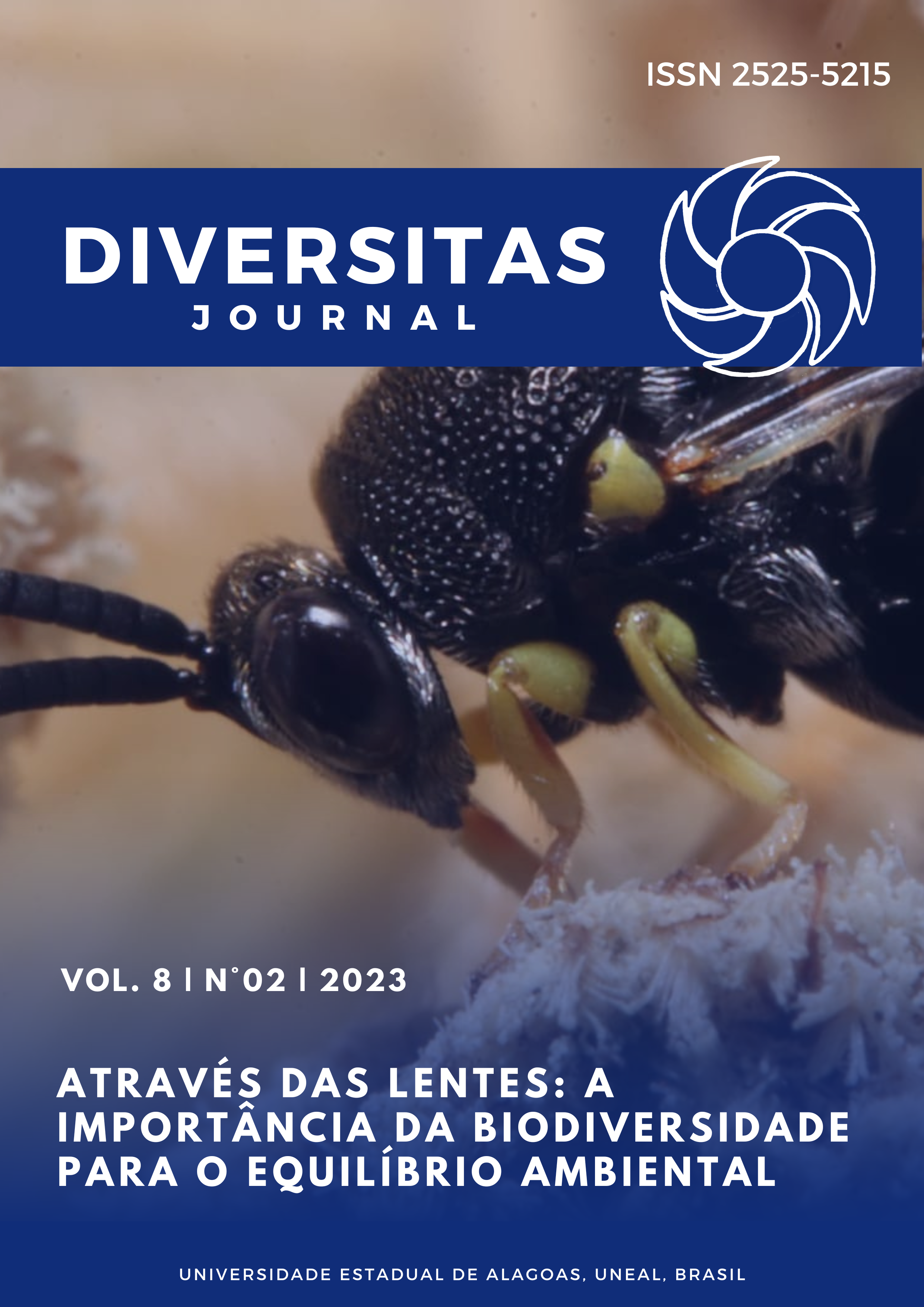Sensor fusion applied to the estimate of luminous intensity (LUX) in practical class
DOI:
https://doi.org/10.48017/dj.v8i2.2582Keywords:
instrumentation; mathematical modeling; redundant quantitative dataAbstract
In the last ten years, the development of sensors with greater accuracy and precision due to improvements in manufacturing processes has enabled the expansion of their use in several areas. However, the purchase price, mainly of products from renowned manufacturers, in view of their applications, can make simpler projects unfeasible. The sensor data fusion technique is a viable alternative to resolve this issue, as mathematical models can be proposed and used in different situations. These models allow improving the data obtained in order to generate reliable information. Therefore, the objective of this work was to verify the performance of multiple linear regression applied to the fusion of redundant quantitative data from 5mm LDR sensors in estimating the luminous intensity (LUX) in simulated scenarios. To carry out the experiment, 3 LDR (Light Dependent Resistor) sensors, 3 LM393 signal conditioners, 1 USB 6009 DAQ data acquisition board (14 bits), 1 LT40 Extech luxmeter, in addition to the LabView software were used. It was found that LDR A and B sensors showed higher levels of accuracy. Furthermore, a significant improvement in the level of accuracy was found when combining data from sensors A and B in the form of multiple linear regression.
Metrics
References
Anjos, J. H. P. (2017). Técnicas de fusão de sensores aplicadas à construção e melhoria de desempenho de sistemas de medição [Trabalho de conclusão de curso]. https://www2.dee.cefetmg.br/wp-content/uploads/sites/18/2017/11/TCC_2017_1_JHPAnjos.pdf
Filho, M. B. D. C., Souza, J. C. S., & Schilling, M. Th. (2007). Sobre o problema da integração generalizada de dados. In Sba: Controle & Automação Sociedade Brasileira de Automatica. https://www.scielo.br/j/ca/a/Zs7YpLgNq4T9MbSWFbm8BQz/?format=pdf&lang=pt
Li, J., Zhang, X., Zhou, Q., Chan, F. T. S., & Hu, Z. (2022). A feature-level multi-sensor fusion approach for in-situ quality monitoring of selective laser melting. Journal of Manufacturing Processes, 84(84), 913–926. https://doi.org/10.1016/j.jmapro.2022.10.050
Li, T., Fan, H., García, J., & Corchado, J. M. (2019). Second-order statistics analysis and comparison between arithmetic and geometric average fusion: Application to multi-sensor target tracking. Information Fusion, 51(51), 233–243. https://doi.org/10.1016/j.inffus.2019.02.009
Neves, F. (2017, March 7). Introdução à Fusão de Sensores. Embarcados - Sua Fonte de Informações Sobre Sistemas Embarcados. https://www.embarcados.com.br/introducao-fusao-de-sensores-parte-1/
Akinwande, M. O., Hussaini, G. D., Shehu, U. G. Identifying the Limitation of Stepwise Selection for Variable Selection in Regression Analysis. American Journal of Theoretical and Applied Statistics. Vol. 4, No. 5, 2015, pp. 414-419. doi: 10.11648/j.ajtas.20150405.22
Papa, G., Repp, R., Meyer, F., Braca, P., & Hlawatsch, F. (2019). Distributed Bernoulli Filtering Using Likelihood Consensus. IEEE Transactions on Signal and Information Processing over Networks, 5(2), 218–233. https://doi.org/10.1109/tsipn.2018.2881718
Santana, B. A., Ushikoshi, T. D. A., Chagas, T. P., & Schnitman, L. (2018). Fusão de sensores aplicada à localização de robôs móveis utilizando sistema especialista Fuzzy. Anais Do Congresso Brasileiro de Automática, 1(2525-8311).
Santos, H. Á. (2020). Uma avaliação da contribuição da fusão de sensores de posicionamento relativo na precisão dos sistemas de localização de robôs móveis terrestres [Dissertação de Mestrado].
Serrone, G. D., Moretti, L. A stepwise regression to identify relevant variables affecting the environmental impacts of clinker production, Journal of Cleaner Production, Volume 398, 2023, https://doi.org/10.1016/j.jclepro.2023.136564.
Song, F., Wu, J., Liu, B., Jiang, J., Li, Z., Song, C., Li, J., & Jin, G. (2022). Intelligent green tea fixation with sensor fusion technology. Journal of Food Engineering, 317(317), 110846. https://doi.org/10.1016/j.jfoodeng.2021.110846
Sun, S., Lin, H., Ma, J., & Li, X. (2017). Multi-sensor distributed fusion estimation with applications in networked systems: A review paper. Information Fusion, 38(38), 122–134. https://doi.org/10.1016/j.inffus.2017.03.006
Taylor, C. N., & Bishop, A. N. (2019). Homogeneous functionals and Bayesian data fusion with unknown correlation. Information Fusion, 45(45), 179–189. https://doi.org/10.1016/j.inffus.2018.02.002
Yang, F., Shi, L., Liang, Y., & Zheng, L. (2022). Global state estimation under sequential measurement fusion for clustered sensor networks with cross-correlated measurement noises. Automatica, 142(142), 110392. https://doi.org/10.1016/j.automatica.2022.110392
M. Zhang, W. Wang. (2021). Weighted adaptive partition for heterogeneous IoT data stream. IEEE Internet of Things Journal, 8 (20). https://doi.org/ 10.1109/JIOT.2020.3045726
Zhang, K., Xia, T., Wang, D., Chen, G., Pan, E., Xi, L. (2023). Privacy-preserving and sensor-fused framework for prognostic & health management in leased manufacturing system, Mechanical Systems and Signal Processing, V. 184, 2023,
Downloads
Published
How to Cite
Issue
Section
License
Copyright (c) 2023 Matheus Gabriel Acorsi, Thiago Lima da Silva, Jamile Raquel Regazzo, Rubens André Tabile, Murilo Mesquita Baesso, Leandro Maria Gimenez

This work is licensed under a Creative Commons Attribution 4.0 International License.
The Diversitas Journal expresses that the articles are the sole responsibility of the Authors, who are familiar with Brazilian and international legislation.
Articles are peer-reviewed and care should be taken to warn of the possible incidence of plagiarism. However, plagiarism is an indisputable action by the authors.
The violation of copyright is a crime, provided for in article 184 of the Brazilian Penal Code: “Art. 184 Violating copyright and related rights: Penalty - detention, from 3 (three) months to 1 (one) year, or fine. § 1 If the violation consists of total or partial reproduction, for the purpose of direct or indirect profit, by any means or process, of intellectual work, interpretation, performance or phonogram, without the express authorization of the author, the performer, the producer , as the case may be, or whoever represents them: Penalty - imprisonment, from 2 (two) to 4 (four) years, and a fine. ”


















